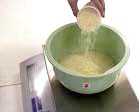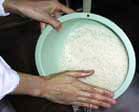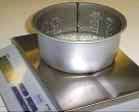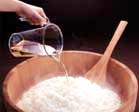zushioda tanjung duren
zushioda tanjung duren jakarta barat indonesia
Jumat, 22 November 2013
steak lidah sapi ala chef gusty.zushioda tanjung duren..jakbar
steak lidah sapi ala chef gusty.zushioda tanjung duren.jakarta barat – Steak atau bistik merupakan sepotong daging yang besar, dan biasanya daging yang digunakan adalah daging sapi, dada ayam, daging merah, dan juga ikan. Namun pernahkah anda mencoba steak yang terbuat dari lidah sapi. Karena kali ini kami akan memberikan kepada anda sebuah resep masakan steak dengan bahan utama yaitu lidah sapi. Beranikah anda mencoba menu makanan yang satu ini.
jika anda ingin mencoba membuatnya dirumah, maka anda bisa melihat terlebih dulu Resep Steak lidah sapi ala chef gusty.... yang akan kami hadirkan untuk anda berikut ini.
Cara Membuat
Bahan dan Bumbu Steak Lidah Sapi- 500 gram lidah sapi
- 2 cm jahe , memarkan
- 6 butir bawang merah , iris tipis
- 3 butir cengkeh
- 3 cm kayumanis
- 90 ml kecap manis
- 2 buah tomat , potong potong
- 1 buah paprika hijau , potong kotak
- 1.000 ml air
- 2 sdm saus tomat
- 1 sdt garam
- 1/2 sdt pala bubuk
- 1/2 sdt merica bubuk
- 1/2 sdt gula pasir
- 500 ml air
- 3 sdm margarin untuk menumis
- 100 gram wortel mini , kupas, rebus
- 200 gram kentang mini , kupas, goreng
- 50 gram jagung putren , belah dua memanjang, rebus
- 50 gram buncis mini utuh , rebus
- 2 siung bawang putih , cincang halus
- 1 sdt peterseli cincang
- 1/4 sdt merica bubuk
- 1/4 sdt garam
- 1 sdm margarin untuk menumis
Cara Membuat Steak lidah sapi ala chef gusty..!!
- Rebus lidah sapi bersama dengan jahe dalam air selama 10 menit hingga mendidih, setelah itu angakt dan kupas kulit lidah sapi.
- Kemudian rebus kembali lidah sapinya hingga matang, lalu angkat dan buang airnya. Kemudian potong daging dengan bentuk tipis melebar, dan sisihkan.
- Setelah itu tumis bawang merah, cengkih, dan kayu manis hingga harum. Lalu masukan paprika hijau dan tomat, aduk dan masak kembali hingga layu.
- Berikutnya masukan lidah sapi, dan aduk hingga rata. Setelah itu tambahkan saus tomat, kecap manis, pala bubuk, merica bubuk, gula pasir, dan garam. Aduk hingga semua bahan tercampur dengan rata.
- Lalu tuangkan air sedikit demi sedikit sambil diaduk-aduk hingga matang, kemudian angkat lidah sapi dan tiriskan.
- Selanjutnya goreng lidah sebentar saja, asal warna lidah sapi berubah kecoklatan menggunakan 2 sdm margarin. Angkat dan sisihkan lidah sapi.
- Membuat pelengkap, tumis bawang putih hingga harum, setelah itu tambahkan wortel, jagung putern, buncis, dan kentang. Aduk hingga semuanya tercampur dengan rata.
- Kemudian tambahkan peterseli cincang, merica bubuk, dan garam. Aduk kembali hingga rata kemudian angkat.
- Sajikan lidah sapi bersama dengan pelengkapnya.
resep sederhana aja
resep ala chef gusty.zushioda tanjung duren.jakarta barat – Jika anda merasa bosan dengan menu masakan dari nusantara ini, maka anda bisa mencob menu masakan asal jepang yaitu suhsi. Cara untuk membuatnya juga tidak begitu susah dan tidak membutuhkan bahan-bahan yang mahal, anda bisa membuat sushi sesuai dengan lidah anda. Dengan memilih bahan-bahan yang anda sukai.
Nah, buat anda yang ingin mencoba membuat sushi dirumah, maka anda bisa melihat terlebih dahulu Resep Masakan Sushi Ala Indonesia Sederhana yang akan kami sajikan khusus untuk anda semua.
resep ala chef gusty.zushioda tanjung duren.jakbar
Bahan Untuk Membuat Sushi Ala Indonesia- Nasi secukupnya
- 1 lembar nori atau rumput laut kering berbentuk lembaran besar
- 1/4 bagian timun yang dipotong memanjang
- 1 butir telur, kocok lepas, buat dadar bulat lebar, tidak perlu tebal
- 1 buah sosis rasa ayam atau daging sapi
Cara Membuat Sushi Ala Indonesia Sederhana
- Pertama siapkan penggulung sushi, lalu letakan selembar nori diatas penggulung suhsi tadi. Dan ratakan nasi diatasnya.
- Kemudian susun telur dadar, sosis, timun diatas nasi. Lalu gulung nasi hingga berbentuk padat.
- Setelah itu iris sushi sesuai dengan selera anda, dan sajikan sushi bersama dengan wasabi atau mayonaise.
resep suhi praktis
Resep Sushi Praktis

Bahan :
- Nasi secukupnya
- 1 lembar nori atau rumput laut kering
- 1/4 timun, potong memanjang
- 1 buah sosis rasa ayam atau sapi
- 1 butir telur, kocok lepas dan buat dadar bulat lebar dan tidak terlalu tebal
Cara Membuat :
- Siapkan penggulung sushi yang bersih, kemudian ratakan nasi dengan menggunakan gulungan tersebut hingga nasi menjadi padat.
- Setelah itu taruh nori pada atas nasi, sisihkan.
- Siapkan telur dadar yang telah dilebarkan sebelumnya, lalu susun sosis dan timun di atas telur dadar.
- Gulung isi sushi tersebut dengan menggunakan penggulung susho hingga nasi menjadi padat.
- Iris sushi dengan ketebalan sesuai selera.
- Untuk lebih mudah, sahabat juga bisa menyusun nori terlebih dahulu, kemudian nasi dan isian lainnya di atasnya.
- Untuk menambah kelezatan sushi, sahabat bisa menyajikan sushi dengan wasabi atau mayonaise.
resep sederhana sushi
Resep Sushi Sederhana

Bahan :
- 20 sendok makan nasi pulen
- 2 box nori (rumput laut)
- 10 tetes cuka
- 2 sendok teh gula pasir
- 1 sendok teh garam
- 3 sendok makan air matang
Isi :
- 4 lembar daging asap
- 6 potong chicken nugget bentuk stik,goreng
- 1 buah timun, belah 4, buang polar tengahnya, rendam dengan kecap asin
- 1 buah wortel. belah 4, rebus, rendam dengan kecap asin
- 2 buah telur, dadar tipis-tipis jadi 2 lembar
Cara Membuat :
- Larutkan cuka, garam dan gula dengan air, kemudian campur dengan nasi pulen hangat. Setelah itu aduk hingga rata.
- Siapkan selembar plastik 2 kg yang tahan panas, letakkan 1/2 adonan nasi tadi di dalamnya, tekan dan ratakan agar berbentuk lembaran pipih, kurang lebih 1/2 cm.
- Atur isi sushi, letakkan telur dadar, taruh diatasnya 2 lembar daging asap, timun, chicken nugget stik, wortel lalu gulung.
- Letakkan nori di atas lembaran adonan nasi pipih, balik dengan bantuan plastik dengan posisi nori di bawah, tekan-tekan agar nori lengkap dengan sempurna pada nasi.
- Letakkan gulungan isi sushi pada tepi lembaran nasi+nori tadi, kemudian mulailah menggulung dengan bantuan plastik tadi, padatkan.
- Buka plastik, potong golungan sushi dengan hati-hati setebal kurang lebih 2 cm.
- Setelah itu sushi siap disajikan dengan kecap asin atau wasabi jika sahabat suka.
resep sushi tradisional
Resep Sushi Tradisional Jepang

Bahan :
- 540 gram (2 1/2 cangkir) beras koshihikari
- 200 gram salmon segar, potong 1 cm
- 935 ml (3 3/4 cangkir) air dingin
- 125 ml (1/2 cangkir) cuka beras
- 2 sendok makan gula kastor
- 1/2 sendok teh garam
- 6 lembar nori
- 1 alpukat, belah 2, kupas, iris tipis, cincang
Penyajian :
- Saus kedelai
- Pasta wasabi
- Acer jahe
Cara Membuat :
- Taruh beras kedalam sebuah saringan, kemudian cuci beras dengan air dingin yang mengalir hingga bersih. Setelah itu taruh beras dan air ke dalam panci besar, tutup, masak dengan api besar, dan didihkan. Kecilkan api dan tutup selama 12 menit atau hingga air terserap, angkat dan sisihkan. Tutup selama 10 menit.
- Campur cuka, gula dan garam dalam mangkuk kecil, kemudian pindahkan nasi ke dalam mangkuk kaca besar, aduk nasi dengan menggunakan pengaduk kayu, setelah itu secara bertahap tambahkan cuka, aduk perlahan hingga rata. Tunggu selama 15 menit hingga nasi menjadi dingin.
- Taruh alas sushi pada telenan, tempatkan lembaran nori, bagian mengkilap menghadap ke bawah, di atas alas. Sebaiknya tangan masih dalam keadaan basah untuk menyebarkan nasi secukupnya di atas lembaran nori, sisakan 3 cm pada tiap sisinya.
- Taruh salmon dan alpukat pada bagian tengah nasi, tahan isian di tengah sambil menggulung alas. Lakukan cara tersebut hingga nori habis.
- Gunakan pisau tajam untuk memotong-motong sushi dengan tebal potongan 1,5 cm. Kemudain tarih di atas piring dengan kecap, wasabi, dan acar jahe sesuai selera.
sushi rice
1. Measure the rice (White Short Grain or Medium Grain) |
||||||||||||||||||||||||||||||||||||
| It is desirable to accurately weigh the rice with a scale
(as the quality of cooked rice tends to vary if not weighed). If using a
measuring cup, make sure to level off the top, as the cup tends to
yield an amount different from the desired amount. The type of rice used is optional, depending on taste. However, the following conditions should be maintained: a. [Bad] grains should be kept to a minimum ([bad] grains are those that are white-cored, broken, cracked, immature, or grown under adverse conditions). b. The rice should be properly milled, leaving a sheen on the kernels with no bran residue on the germ. c. Sufficient moisture set at a level higher than 14% is preferred. Sufficient moisture protects against cracking during water absorption, but too much water gives rise to mold. d. The rice should have been milled less than a week before the date of cooking. e. The optimum amount of rice to be cooked at once should be no more or less than about 80% of a rice cooker's capacity.
| 
| |||||||||||||||||||||||||||||||||||
Langganan:
Postingan (Atom)
























